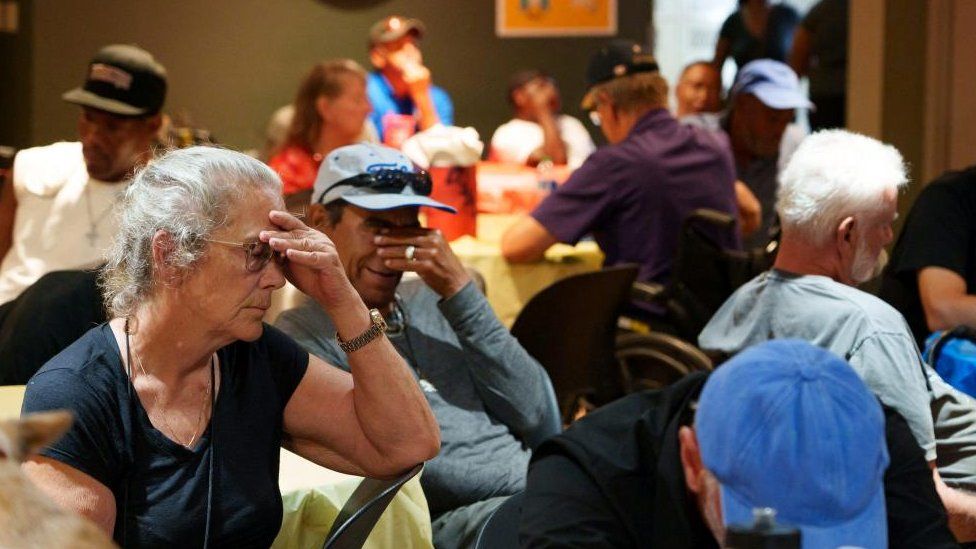Phoenix gets some relief from heat streak of 31 days over 110F
- Published

Residents of Phoenix, Arizona have received some brief respite as a 31-day streak of temperatures over 110F (43C) came to an end after monsoon rains.
The heat streak ended on Monday when the temperatures maxed out at 108F.
Temperatures are expected to rise again later in the week, possibly reaching 115F.
Cities across the US, like Las Vegas and El Paso, have also been experiencing record-breaking heat this summer.
"The record streak of 31 straight days of 110+ degree temperatures has ended," the National Weather Service (NWS) wrote on Monday on social media site X, formerly known as Twitter.
"The high temperature at Phoenix Sky Harbor Airport reached 108 degrees this afternoon, which is only 2 degrees above normal."
The previous heat record was set in 1974 with 18 consecutive days over 110F.
Last month was the hottest on record in Phoenix for any US city, with an average temperature of 102.7F, according to the Arizona State Climate Office.
Arizona's monsoon season typically runs from mid-June to the end of September. The season has had a later start this year.
Rainfall usually comes in the form of late-in-the-day thunderstorms. Monsoon season happens when wind directions shift in the summer, carrying moisture north-ward from Mexico, according to the NWS.
Relief in Phoenix is expected to brief, though. Forecasts are predicting temperatures to rise again later in the week. National Weather Service meteorologist Matthew Hirsch said August might be even hotter than July.
Overnight temperature lows in Phoenix did not dip below 90F for 16 straight days.
There have been 25 heat-related deaths in Maricopa County, which includes Phoenix, as of 21 July, though that number could rise as hundreds more deaths are under investigation.
Heat is the number one weather-related killer.
Doctors also saw an uptick in patients who were burned after touching hot objects or surfaces, including asphalt that had been heated by the sun.
Dry conditions have also contributed to wildfires in the US southwest.The York Fire in California's Mojave National Preserve is the state's largest wildfire this year, burning about 77,000 acres.
Millions of Americans have been under heat advisories at various times this summer.
Watch: The US weather records in July broken down
Las Vegas, Nevada tied a 1998 record on 16 July, reaching 116F and similar to Phoenix, El Paso, Texas just ended a 44-day streak of over 100F weather.
Last week, President Joe Biden announced measures to protect Americans against the "existential threat of climate change" amid the extreme heat.
The measures are designed to help workers most vulnerable to heat, increase funding for weather forecasting, and expand water storage capacity in the western states.
Heatwaves have become more frequent, more intense, and last longer because of human-induced climate change.
The world has already warmed by about 1.1C since the industrial era began and temperatures will keep rising unless governments around the world make steep cuts to emissions.
Related Topics
- Published28 July 2023
- Published19 July 2023
- Published14 July 2023